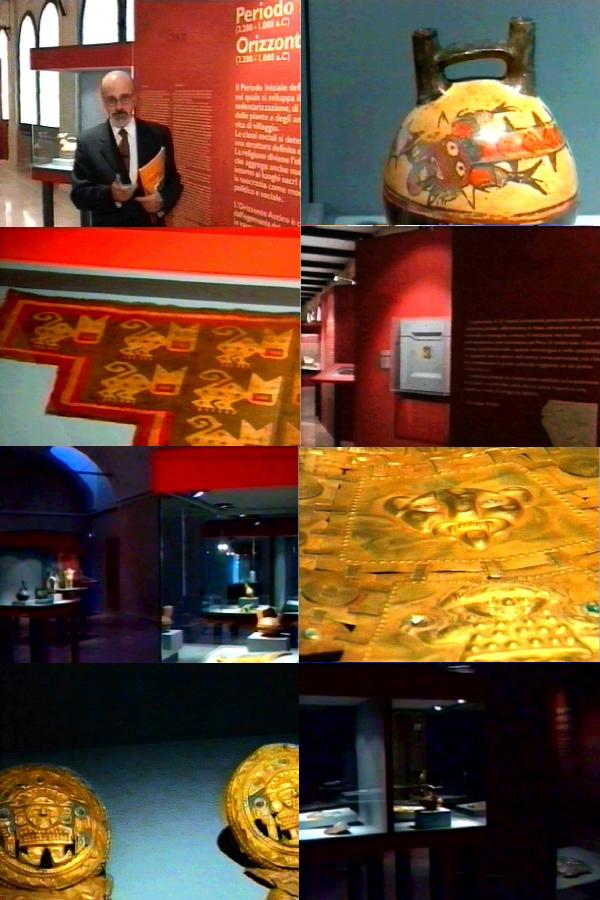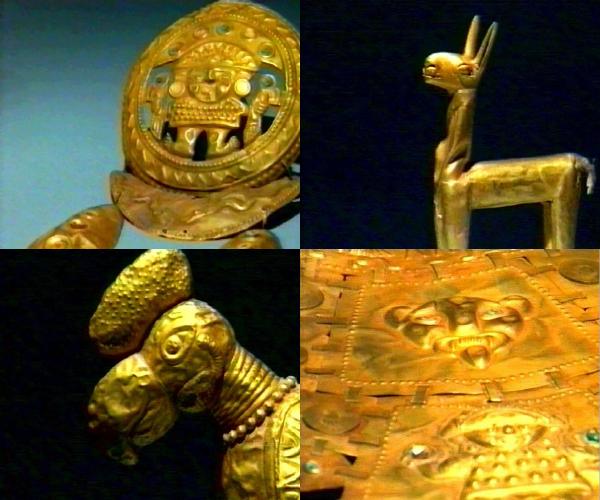A Database of Cords and Knots
By
1200 AD, the Incas were firmly established in Peru ;
by 1500, their empire extended from Ecuador
to Chile Peru Spain
Peru is about 2/3 the size of Mexico
The
Incan Empire, perhaps 5 million strong, flourished from about
1400 to 1560 AD. The groups inhabiting Peru , Ecuador ,
Bolivia , Chile , and Argentina 14,300
miles through the Andes
at altitudes of 8,000 to 16,000
feet !) was built and messages were transmitted
throughout the empire by runners (each ran 1.5 miles with a quipu and a recited message). This complex economy and superstructure
lacked but one of the attributes usually required for classification as a
"civilization": writing.
The
Incans kept accurate accounts of the goods in their storehouses, as well as
census and manpower figures. Messages, taxes, inventories, well as census and man-power
figures. Messages, taxes,
inventories, food
consumption, censuses of people and stock, farmland, tributes paid, etc., were all recorded
on a quipu ("kee'-poo"),
an assemblage of knotted color cotton cords, made up
of one thick main cord and a hierarchy of top, pendant, subsidiary, and
"dangle "cords. Let us consider that textiles were an extremely
important part of the fabric of their society. The placement and spreading of the cords, the
number and type of knots [three types: simple, figure eight, and "long"], and the colors of the cords all conveyed information. For example, the color
indicated men, women, children, maize, silver, gold, etc., were being
represented, depending on the quipu's context. In the case of weapons, the succession
in the collection of knotted cords represented spears, arrows, bows, javelins,
clubs, axes, and slings in that order.
Incan society itself was ordered into 8 levels with the Supreme Inca at
the top. The authorities at each
level had a specific number of people underneath them (always a multiple of 10).
Numbers
are represented by clusters of knots spaced along the cords. The
absence of a knot that represents 'zero'. To avoid ambiguoities,
a particular use of color patterning clarifies
whether a cord without any knots should be interpreted as zero. Quipus were used to perform the four arithmetic functions
as well as ratio and proportion in a manner identical to that on the abacus
("abacus" is derived from the Hebrew abaq,
which has two meanings, "to cover with dust" and "to make a loop or knot.
Most
quipus were destroyed by invading Spaniards and the
Catholic priests that followed them who believed quipus
to be the work of the Devil. 500 remain
today, all in museums and all found in Incan graves. Most of the 500 are
information-recording ones rather than arithmetic computational ones (which
were untied and reused).
Knots
came before writing in many peoples' histories: "Let people return to the
spirit of the olden days when they used knotted cords for their records" -
China Ivory Coast China Zimbabwe and Tanzania Tanzania
The
textile patterns of the Kuba kingdom of the
present-day Congo (previously Zaire
The Quipucamayu,
'the keeper of the Quipus'
The
Quipu were the method by
which the Inca consolidated their hold over the kingdom of the four directions.
This message device could be carried by runners to all corners of their world. The
statistics it relayed enabled the ruling class to know the exact economic
conditions of all regions of their empire and act accordingly to prevent such
catastrophes as drought and famine.
This
marvellous method of communication which they used was nothing more than a
series of knotted multicoloured strings. Although this instrument was not a mode
of writing or a system of calculating numbers, it served as the mnemonic device
by which the Incas sent messages, recorded their laws, and decided the fate of
conquered territories.
Let
us see an example of the work of the Quipucamayu, the
keeper of the Quipus. He would use a black cord, the colour
that indicated time, as the central string to hang the others from. Then he would
suspend from it many uncoloured strings or coloured strings with many little
knots tied in them. A crimson thread refers to the emperor because the crimson is
the colour of the Inca. The reader of the Quipu,
seeing this system would read it as saying before the first emperor (crimson
thread) for a very long time (many threads and knots), the people had no ruler (no
scarlet threads). Chiefs are also indicated by deep purple and religious people by blue
threads. To describe the nature and
amount of the treasure gained by the emperor a string of yellow for gold and
white for silver would be suspended from the thread of the province it was
taken from. (Louis Baudin "La vie quotidienne au temps de derniers
inkas" ).
Let
me invite the reader to visit the Exhibition DALLA TERRA DEGLI INCAS, held in Torino ,
Palazzo Barolo, 2000
The
curator was Giuseppe Orefici, who studies the secrets
of lost civilizations
http://www.bbc.co.uk/science/horizon/1999/nasca_script.shtml
 G.Orefici:
G.Orefici:
Terrecotte:
Yarns and textiles
Gold and silver:

Copyright © 2008 Amelia Carolina
Sparavigna